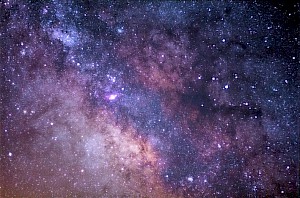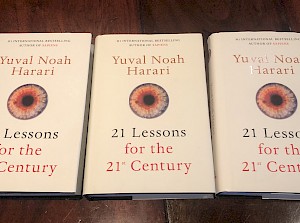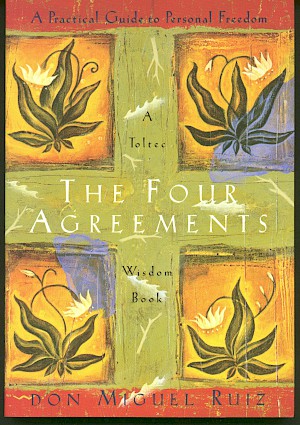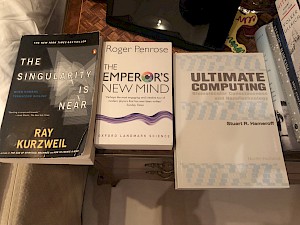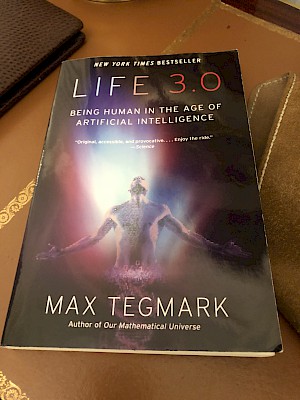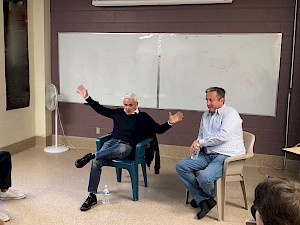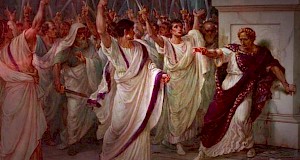Do We Live in the First and Only Universe?
August 16, 2021“There is a theory which states that if ever anyone discovers exactly what the universe is for and why it is here, it will instantly disappear and be replaced by something even more bizarre and inexplicable. There is another theory which states that this has already happened.” - Douglas Adams
How do you go from nothingness to somethingness? I have always struggled with that question. So have countless physicists and cosmologists in the past 100 years. The most popular theory and the one we are all taught in school is the standard Big Bang inflationary theory. It explains how the universe evolved from the tiny fraction of a second after the actual Big Bang, but is unable to explain what happened prior to that or what caused it. It suggests there was, well, nothing. No time, no space, no matter. Just, nothingness. But unless you believe in a Godly creator or that we are some higher intelligence’s simulation, it’s a question that requires a scientifically based answer.
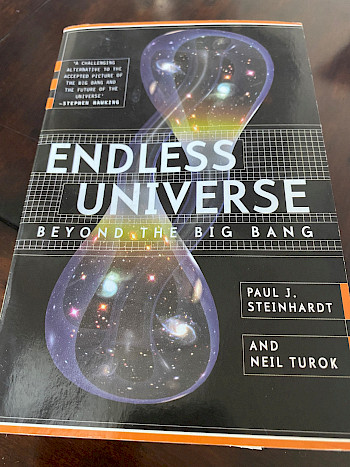 A couple of years ago I had the pleasure of meeting Paul Steinhardt, who is the Albert Einstein professor in science at Princeton University. He recently sent me a signed copy of his book, “Endless Universe”, which he co-wrote with another theoretical physicist, Neil Turok. In it he challenges the standard model of the Big Bang and makes a compelling case for an alternative model. Steinhardt’s model suggests a “cyclic” universe (a big bounce) that repeats many and perhaps infinite times. The standard Big Bang inflationary model (let’s refer to it as the standard model), on the other hand, has a finite life, such that in a trillion years or so, the universe as we know it, will cease to exist. It will expand at an accelerating pace until all the stars and galaxies die off and we are left with a vast nothingness. This is certainly the view of most of the scientific community, including my friend Brian Greene, who wrote a book, “Until the End of time”.
A couple of years ago I had the pleasure of meeting Paul Steinhardt, who is the Albert Einstein professor in science at Princeton University. He recently sent me a signed copy of his book, “Endless Universe”, which he co-wrote with another theoretical physicist, Neil Turok. In it he challenges the standard model of the Big Bang and makes a compelling case for an alternative model. Steinhardt’s model suggests a “cyclic” universe (a big bounce) that repeats many and perhaps infinite times. The standard Big Bang inflationary model (let’s refer to it as the standard model), on the other hand, has a finite life, such that in a trillion years or so, the universe as we know it, will cease to exist. It will expand at an accelerating pace until all the stars and galaxies die off and we are left with a vast nothingness. This is certainly the view of most of the scientific community, including my friend Brian Greene, who wrote a book, “Until the End of time”.
Steinhardt bases his thesis on a number of scientific facts and observations. Much of his evidence requires an understanding of physics and cosmology, so I will attempt to explain the basics only. (I hope Steinhardt forgives me for skipping over a number of details I am sure he would deem important.) He is quick to mention that the evidence we use to make the case for the standard model applies equally to both models (the math is similar for both) and that with further observation, both models could easily be proven wrong down the road.
His critique of the standard model is that it’s a “patchwork “ model that requires “fine tuning” as new facts become available. For it to work, we need to make two separate assumptions about types of energy we can’t even locate, never mind define. The first is the energy that would be necessary to cause a mind-boggling rapid inflation of the early universe. For our current universe to be as uniformly spread out as we see it in the WMAP picture it would require an unbelievably rapid expansion immediately after the Big Bang moment. Otherwise, our universe would be distorted, warped and turbulent.
His second beef with the standard model is the inclusion of “dark energy” which was discovered some two decades ago, when we realized that the universe started expanding at an accelerated pace starting around four billion years ago (some 10 billion years after the Big Bang). Although we don’t really know what this dark energy is, we know it represents about 68% of the known energy in the universe. Incidentally, dark matter (which glues our galaxies together), another unknown feature of our universe, represents 27% and the matter we are all familiar with is less than 5%.
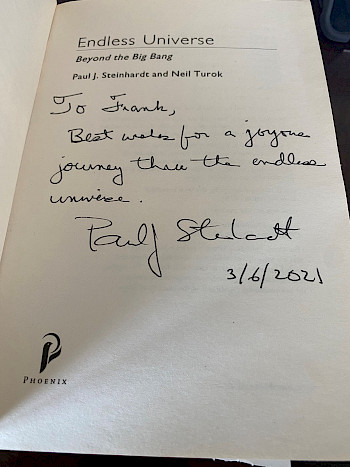 Steinhardt then goes on to explain how his cyclic model overcomes the need for the fine-tuned elements in the standard theory. He opines that the two unknown energies required wouldn’t be needed if the universe didn’t have a beginning. That is, no Big Bang.
Steinhardt then goes on to explain how his cyclic model overcomes the need for the fine-tuned elements in the standard theory. He opines that the two unknown energies required wouldn’t be needed if the universe didn’t have a beginning. That is, no Big Bang.
To explain his cyclic model, Steinhardt uses string theory language. Without getting into the specifics of string theory, just know that for the theory’s math to work, you need to add additional dimensions to the 3D space we experience. Our 3D space, our “brane”, is just a surface embedded in a higher dimensional space. Our particles can never transcend into the other dimensions. Gravity may the only force that propagates on the full space time dimensions.
Steinhardt postulates that it’s possible two branes, each filled with matter and radiation, could have collided or bounced off one another creating the energy required to start a new universe. He explains the expansion of the universe coming from the “potential energy“ caused whatever force brought the two branes together, suggesting that potential energy can look a lot like the dark energy in the standard Big Bang model. He goes on to suggest that the “kinetic energy” also caused by the collision, will allow the expansion to continue along the 3D dimension while a contraction begins along the extra dimensions, all leading to further collisions of branes and a subsequent universe.
So, which theory is correct? Hopefully, over the next few years, our understanding of gravitational waves may shed some light on this debate.
In the meantime, I am rooting for the cyclic model, which is eerily similar to certain aspects of eastern religious philosophy, especially Hindu philosophy. I became interested in the connection between quantum physics and eastern mysticism after I read the book, “The Tao of Physics” by Fritjof Capra many years ago. It makes a case that the basic themes of modern physics are similar to the themes of all mystical traditions; the fundamental interrelatedness and interdependence of all phenomena. Although Capra claimed such titans of physics such as Werner Heisenberg and Niels Bohr endorsed his views, the book has been widely criticized for his lack of knowledge of both quantum physics and eastern religious philosophy.
That aside, there is one aspect of Hindu philosophy I quite like: That time is infinite with a cyclic universe, where the current universe was preceded and will be followed by an infinite number of universes. The cycle from birth to destruction of each cycle is 4.32 billion years and continues for 311 trillion years.
If Steinhardt (and Hindu philosophy) is correct , we can all rejoice in the fact that if we get it wrong this go around, we may have another 72,000 chances to get it right.
In any event, if you have an interest in physics and cosmology, I recommend you read this book. “Endless Universe” might just challenge what you learned in school.
“Time and the distinction between past, present and future is only a stubbornly persistent illusion."
- Albert Einstein



